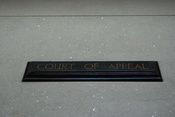Duty of care is the responsibility to do everything reasonably practical to keep the people affected by your actions safe. In this essay I will discuss the duty of care given, and expected, in some court cases, and my judgment of them. Also, I will summarize these cases, and explain the issues involved. The information presented in this essay was found in work sheets handed out in class, various internet sites, and from my own point of view.
Around 7:00am on November 8, 1985, Corporal Eglinski received a telephone call regarding an accident that had occurred between Gold River and Campbell River. The vehicle had hit a patch of ice and slid into the Campbell River. Twenty-five minutes later, Eglinski called the RCMP office and ordered a sanding truck to help the icy conditions on the highway. Around 8:15 he called the RCMP office a second time, from the scene of the accident, about the need for a sanding truck.
Then, at 8:20, Eglinski found another accident and ten minutes later a third accident. So, he called the RCMP office a third time, and was informed that the Ministry of Transport was contacted and had a sanding truck on its way.
At 8:30am, Montague Brown left his house in Gold River, in his pick-up truck, heading for Campbell River. The road conditions that day were good. However, he hit a patch of black ice when rounding a curve and lost control of his truck. After sliding hundreds of feet, his truck slid off the road and over a steep embankment. The driver of the sanding truck found Mr. Brown at the scene of his accident, at 9:23, climbing up the embankment after being unconscious for some time. He suffered serious injuries.
In court, Mr. Brown alleged that the crown failed to maintain the roads, and respond fast enough when notified of the hazardous conditions. Therefore they were negligent in their duty of care. The province defended them selves by saying that they maintained the highways reasonably and responded in reasonable time considering the strange nature of black ice.
Statute Law states that the government has a duty to maintain the highways reasonably, no matter what provincial law says. The ministry has charge and direction of everything relating to highway maintenance. This includes: construction, repair, maintenance, alteration, improvement and operation of highways.
Case Law states that the government can be sued for negligence, but the liability of the government relies on the nature of the negligence. There is a clear difference between malfeasance and nonfeasance.
Malfeasance is the term used when something was done in a sloppy or negligent way. If the government decides to have control over a certain action, it must do it correctly. If it is not done correctly, the government will be treated as any private person responsible for an action. One way for a government to steer clear of liability issues, is to stop a service completely. Fire departments are a good example of this. It is the elected council's decision whether or not a community will have one. But if they chose to have a fire department, it must operate effectively. If fire fighters neglect to do something, the government can be sued by the person involved in the fire, for not having a reasonably skilled fire department.
Nonfeasance is when the absence of a government service caused injury. However, a plaintiff suing the government for nonfeasance must prove that the government had a duty to offer the service in question. The government has three forms of duties in general: to regulate, to inspect and to repair. It must negotiate with workers and make difficult decisions, to complete these tasks appropriately. The court also has a problem in dealing with nonfeasance cases. If the defendant is held liable, the decision will have the crucial result of demanding higher taxes from residents to avoid additional lawsuits. A court does not have the power to tax the people.
County of parkland No. 31 v. Stetar, 1975 Stetar was driving northbound, in a rental car, toward a rural intersection. The passengers in the vehicle were: his two kids, his friend Woodrow, and Woodrow's daughter. At the intersection, Stetar collided with another car, driven by Poirier. Poirier's passengers were: his wife and children. Woodrow's child was killed and all other victims were injured. Stetar sued Poirier, Edmonton Car Rentals, and the county. Edmonton Car Rentals and Poirier counterclaimed Stetar and the county. Mrs. Poirier and her children sued Stetar and the county. Woodrow sued Stetar, Poirier, Edmonton Car Rentals and the county.
During the trial, Poirier discontinued his suit against Stetar, the trial judge dismissed the suits against the county, and non-suited Poirier and Edmonton Car Rentals for not giving notice of injuries and claims after the accident. The judge found Stetar responsible. Stetar and Woodrow appeal. The Court of Appeal decides that Stetar is 75% liable and the county is 25% liable. In the end the Supreme Court changed the decision to 50% liability to both Stetar and the county. (Because the county knew there was a dangerous intersection there and should have monitored the problem) Just v. British Columbia, 1989 Just and his daughter were forced to stop in traffic near a rocky slope. While stopped, a boulder fell from the slope, injures Just, and kills his daughter. Just sued the province for neglecting to maintain the highway. During the trial, the judge found that the system of inspection was a policy matter; therefore the province was not liable. The judge said that the court has no jurisdiction to make rulings on how provinces should look after their highways. The Appeal Court agreed with the decision. The Supreme Court ordered a new trial, saying that the judge did not fully consider liability.
Swinamer v. Nova Scotia, 1994 Swinamer was driving on a public highway, when a large elm tree fell on his truck, and left him a paraplegic. There had been an inspection program done earlier by the department of transportation, and a foreman was assigned to the area where the accident later took place. However, the elm tree had not been marked as hazardous.
The department argued that it had no authority to enter the property holding the tree, and that it was not responsible for private property. The trial judge found the department liable, saying that the government should have had forestry experts to recognize hazardous trees. The province appealed, and it was upheld. The Supreme Court dismissed the appeal, and stated that a province has the authority to go on private land to fix a dangerous situation. The province owes a duty of care to those using its highways.
Mortimer v. Cameron, 1994 Mortimer and Cameron were play fighting, while drunk. Mortimer tripped and pulled Cameron down the stairs with him. Both men fell onto the landing, and then threw a think piece of plywood wall, and ten feet down to the ground outside. Cameron was not hurt, but Mortimer was left a quadriplegic.
Investigation showed that the staircase and weak plywood wall had not been built according to building code. Mortimer sued London, the building owner, and Cameron.
In court, the judge found the city 80% liable and the building owner 20% liable. Damages of 4.6 million were awarded. The Court of Appeal changed the decision so that the building owner was 60% liable and the city was 40% liable.
Additional case #1 Kimberly Rogers was a forty year old woman from Sudbury Ontario. At the time of her death she was eight months pregnant, and on anti-depressants. She had been sentenced to six months of house arrest, after pleading guilty to welfare fraud. (She accepted student loans to pay for re-training, while on welfare) Roger's sentenced also included a lifetime ban from welfare. She felt sick on the day she died, but was afraid to leave her apartment, for fear of being imprisoned, and having her baby taken away. She died August 9th 2001, of an overdose of her prescribed medication, during a record breaking heat wave.
I believe that the government was not fulfilling its duty of care for Rogers when it banned her from receiving welfare for life. It neglected to provide Rogers with the necessities of life. The jury was given fourteen recommendations for the government, to accept, or deny, and they accepted all of them. I am now going to refer to the first recommendation to emphasize my point. "The zero tolerance lifetime ineligibility for social assistance as a result of the commission of welfare fraud, pursuant to Ontario Works Act, 1997, O. Reg. 134/98 Section 36 should be eliminated. The temporary ineligibility in the instance of offences that have occurred before April 1, 2000 should also be eliminated." The jury agreed in saying that the government must prevent people from being homeless, starving, and mostly from an early death. Studies show that this lifetime ban could cause destructive affects on our society.
Additional case #2 Cynthia Dobson was almost 7 months pregnant, when she was involved in a car accident. The accident caused prenatal injuries to her fetus, which left doctors with no other option than to perform a caesarian section later that day. The prenatal injuries caused permanent mental and physical impairment. The child sued for damages, claiming that the mother caused the collision with her negligent driving. The judge felt that the child had the legal capacity to sue for negligence. The Court of Appeal dismissed the appeal, but the appeal was later accepted. If the decision was made that mother could be sued for accidentally harming herself while pregnant, many pregnant women, or women considering pregnancy would be very afraid for the 9 months they carry their child. The ideal way to deal with this problem is to allow a mothers duty of care to her fetus as a moral responsibility, which many women generously recognize and respect without being forced by the law.
The issues in the majority of "duty of care" cases, is who is responsible, and just how liable they are for damages. For example, in the feature case, the question is whether the province is guilty or whether Brown himself is guilty of negligence. If the province is guilty, then the liability of the government must be decided, which is often based on nonfeasance and malfeasance.
My verdict for the feature case is that I find the province 50% liable and the plaintiff 50% liable. I do not know the seriousness of the injuries caused, so I cannot properly estimate the damages to be rewarded. However, I decided on this verdict, because the crown was negligent in maintaining the road, even after being told of the danger on three occasions. But, we must keep in mind that black ice is a very irregular weather condition, which can pass in a matter of minutes. Also, the RCMP office had a hard time locating the sanding truck driver, and they were trying to send a truck to the area. The plaintiff was aware, or should have been aware, of the risks involved in driving in the winter. Therefore, he must accept that no one forced him to drive that day.





